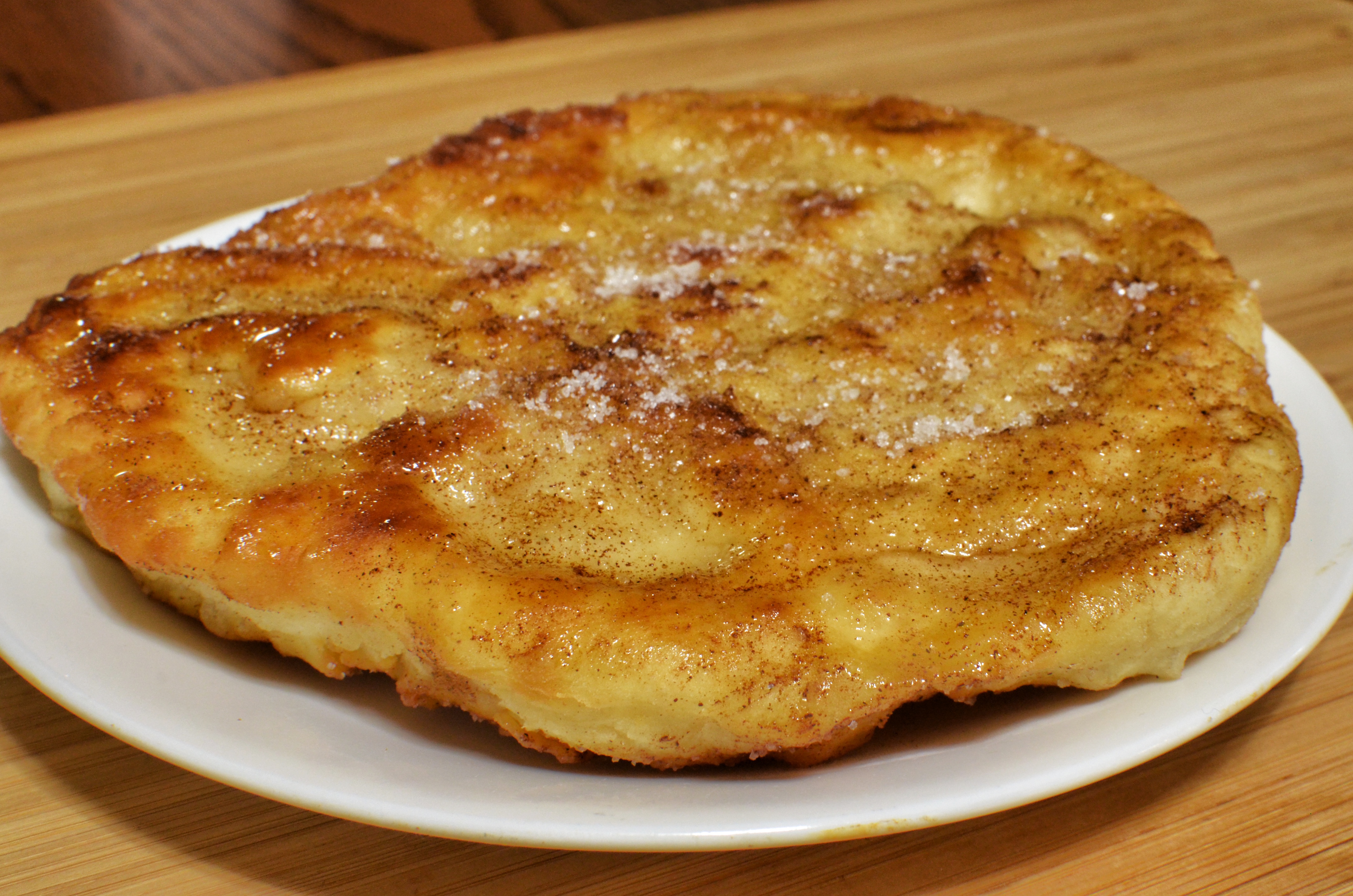Bannock is a form of bread that served as a staple in the diets of early settlers and fur traders. Most Indigenous nations in North America have some version of bannock. Inuit call it palauga, Mi’kmaq luskinikn, and Ojibwe ba‘wezhiganag. The word derives from the Gaelic bannach, meaning morsel, which in turn likely came from the Latin panis, which means bread. Bannock is usually unleavened, oval-shaped and flat. The version that we know today came from Scotland. In its most rudimentary form, it is made of flour, water, and fat or lard. Milk, salt, and sugar are often added, depending on the recipe. It is traditionally cooked by mixing the ingredients into a large, round biscuit and baked in a frying pan. Today, most often, bannock is baked in the oven, making it heavy and dense; or it is pan-fried, light and fluffy; or it is deep-fried.

History of Bannock
It is conventionally believed that Scottish fur traders called Selkirk settlers introduced bannock to the Indigenous peoples of North America during the 18th and 19th centuries. (See also Fur Trade in Canada.) The Scots cooked it in a griddle called a bannock stone, which they placed on the floor before a fire. Scottish bannock was usually made of barley, peameal, or oatmeal. Wheat flour was later introduced. Indigenous people eventually adopted bannock, often using corn flour or plants rather than the wheat flour of Europeans.
Bannock became a staple for voyageurs, fur traders, prospectors, and later, Indigenous peoples. It is a quick and simple carbohydrate-rich food, which was hard to come by in many parts of Canada. Many would mix the dough right into their flour bag, and toss it onto a pan whenever the need arose.
Bannock is a reminder that Indigenous peoples were forced to eat new foods when the Europeans colonized the land that is now Canada. Many Indigenous peoples were moved off their territories and onto reserves, where they were not able to hunt as they once did. The Canadian government supplied them with rations of things such as flour, lard, sugar and eggs. Bannock became a necessity to prevent starvation on reserves.
While bannock has its roots in Europe, some Indigenous nations in North America had versions of unleavened bread-like foods. These were often made from the starch or flour of bracken rhizomes (the underground stems of ferns), which were cooked or baked on rocks over fire, in sand, or in cooking pits or earth ovens. For example, camas bulbs (an herb from the lily family) would have been baked for long periods of time, dried, and then flattened or chopped, and formed into cakes and loaves.
Did You Know?
To celebrate National Aboriginal Day (now National Indigenous Peoples Day) in June 2000, Michael Blackstock, Aboriginal Affairs Manager of the Kamloops Forest Region in British Columbia, published a small booklet entitled “Bannock Awareness.” It contained a brief history of bannock along with recipes. It also included information about land claims, Indigenous rights, and historical notes on the relations between First Nations and settlers.
Bannock Today
Bannock is popular today among First Nations at powwows, festivals and family gatherings. The bannock at these events is usually deep-fried, pan-fried, or oven baked. There are different variations of bannock. For example, some enjoy “lichen bannock,” which is made by pit-cooking or steaming black tree lichen to make bannock-like licorice. Some recipes call for berries such as saskatoons to be added for sweetness.
Bannock plays an important role at restaurants and cafes owned and operated by Indigenous entrepreneurs. At Kekuli Cafe, which has four locations in British Columbia, the slogan is “Don’t Panic... We Have Bannock!” It continues to be a mainstay in popular Indigenous culture. (See also Notable Indigenous Entrepreneurs in Canada.)
“Indian tacos” are another modern adaptation that has become a staple on the powwow circuit. The fried bread is sometimes topped with chili, shredded cheese, lettuce, chopped tomato, along with sour cream and salsa. Indian tacos are now spreading from powwows into the Toronto food scene. Recently, Ojibwe chef Shawn Adler has opened Pow Wow Cafe, where he sells Indian tacos. Adler is pushing the Indian taco further by exploring different renditions, such as beef chili, veggie chili, pulled pork and jerk chicken.
Unfortunately, all that fried bread means bannock can contribute to expanding waistlines. Fortunately, healthier alternatives are available. To cut down the empty calories, use whole wheat flour and maple syrup or honey for sweetness.
Significance
For many Indigenous peoples trying to decolonize their lives, bannock can be a tricky subject. With the European influences of modern cooking utensils and flour, along with the impact of the rationing on reserves, bannock bears many traces of a colonial history. However, by exploring the old ways of making bread-like foods, along with experimenting with new recipes, cooking bannock can be empowering.

 Share on Facebook
Share on Facebook Share on X
Share on X Share by Email
Share by Email Share on Google Classroom
Share on Google Classroom








